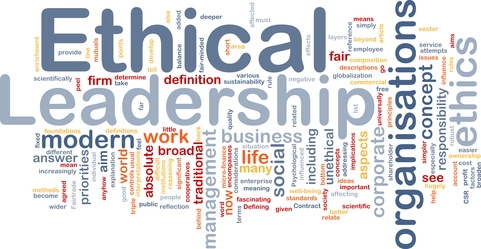Leadership is all about building trust and relationship between you and your followers. It is the ability to influence people by showing them the right direction. A good leader always listens to the followers and motivates them to excel. The leadership style followed by a leader can take a company to heights and sometime even to downfall. Leadership style followed in the organisation varies according to the environment and the purpose of the organization.
For being a good leader one needs to be honest, it doesn’t matter how honest are you. But, when leading a team then you need to increase the level of honesty. Whatever you do as a leader the kind of behaviour you show, it presents the image of your company and the employees tend to follow the same. A leader needs to have ability to delegate the task among different people and have trust on the employees. A leader should have good communication skills, as in business environment you need to make a clear picture of your vision and targets to your employees. Also, to guide them what are they suppose do and what would be the outcomes. A leader should be committed to his work, by showing his dedication at work he not only gains respect but also encourages the employees to do the same. A leader should never kill his/her positive attitude, whatever may be the situation keep your employee motivated and boost their energy level. This would divert them from the stress of work (Forbes 2012).
I got influenced by the leadership of Mohandas Karamchand Gandhi and he was a transformational leader. He used to follow what he said. India is a diverse culture country and he was the only leader to influence people of all groups, irrespective of their cast and community. He always lead by example, he followed the policy of non-violence and lead the Dandi march in 1930. He never treated people with humility and treated everyone as equal. For example, the letter he wrote to senior leader or even to children he followed same approach there were no sign of superiority shown by him. This showed how ethical he was. He was able to communicate well to people and was able to understand their feelings. He was a confident person and he didn’t have a great personality. He followed a simple life, but his confidence in himself held the people to follow him as a leader. And his leadership qualities helped India to gain Independence (Forbes 2011).
In order to talk about my own leadership style, I am a democratic leader. I like to listen to people and takes equal part in each activity within the group. I also have the ability to influence people by giving the actual justification to my views. Moreover, I am an honest and confident person. I have a never say die approach to my work. But when the issue is related to being ethical then I would behave as an autocrat and would take the decisions of my own. And I would not follow the wrong practices against the ethics. According to my colleagues, I am a good team member who collaborates, get involved, and concentrate on the task, a good listener, more practical, persistent and patient person. All these characteristic would help me to grow as a leader in IT industry.
There is always a scope of improvement and no one is perfect. I would like to improve on my communication skills as it is the most important factor to lead people. And one should have the ability to express himself. I would also concentrate on being more creative and to think beyond the limits. I am always able to complete my work on time. However, it takes me a lot of time to accomplish a task, so I would like to improve my time management skills. I am good at performing my own work, but do not have the ability to delegate work. This would increase burden on myself and might affect my performance in long term. For this I should develop an ability to delegate work within a group (Vincent, K. 2013).
References
Forbes (2011) Two Lessons from India’s Greatest Leader – Gandhi [online] available from <http://www.forbes.com/sites/karlmoore/2011/08/22/2-lessons-from-indiasgreatest-leader-gandhi/2/> [17 December 2013]
Forbes (2012) Top 10 Qualities That Make A Great Leader [online] available from < http://www.forbes.com/sites/tanyaprive/2012/12/19/top-10-qualities-that-make-a-great-leader/2/ > [17 December 2013]
Vincent, K. (2013) ‘Effective leadership’. FMCG [online] 19(8), 40. Available from < http://web.ebscohost.com/ehost/pdfviewer/pdfviewer?sid=995134d3-186b-4ab8-927b-f5bdebb7d813%40sessionmgr111&vid=40&hid=119 > [17 December 2013]





